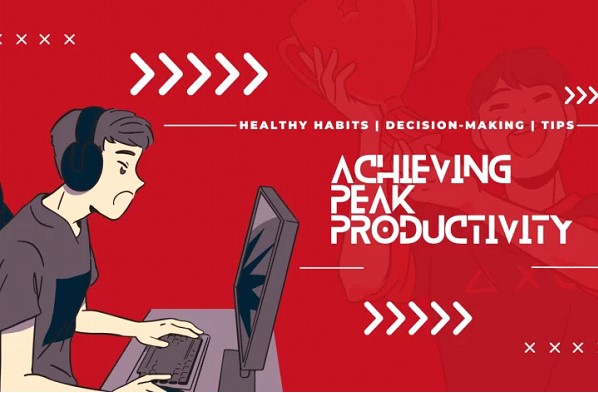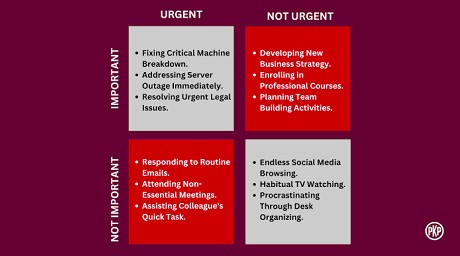Reaching Maximum Productivity: Tips for Balancing Work and Life

Discover ways to achieve top productivity and balance work and life, such as time management, healthy habits, stress management, and effective communication to reach your full potential.
Pursuing peak productivity while nurturing a harmonious work-life balance may appear challenging. Nevertheless, this goal is achievable and immensely rewarding with the right strategies and a commitment to seamless work-life integration. In this article, we’ll delve into practical strategies and valuable tips to assist you in reaching your full potential. By the end, you’ll have a clear roadmap to enhance your productivity and establish equilibrium between your personal and professional life.
Understanding Work-Life Integration
Work-life integration represents a paradigm shift from the conventional concept of work-life balance. It emphasizes the significance of aligning your values with your professional objectives. This alignment fosters a holistic approach where work and personal life are not adversaries but complementary elements.
Work-life integration acknowledges the interconnectedness of your career and personal life. When you achieve harmony between them, achieving peak productivity becomes more attainable. This approach encourages you to identify and prioritize what genuinely matters to you, thus making your daily routine more fulfilling.
The Foundation of Productivity: Time Management
Prioritization Techniques
The Eisenhower Matrix, inspired by President Dwight D. Eisenhower, offers a structured approach to task prioritization, categorizing them into four quadrants:
- Urgent and Important: Tasks requiring immediate attention.
- Not Urgent but Important: Significant tasks without immediate deadlines.
- Urgent but Not Important: Tasks demanding immediate action but lacking long-term significance.
- Neither Urgent nor Important: Tasks with minimal contribution to your goals, suitable for delegation or elimination.

The Eisenhower Matrix
Prioritizing tasks in the first two quadrants allows you to allocate your time effectively, ensuring essential tasks aren’t overshadowed by less significant ones.
The 2-Minute Rule recommends tackling brief tasks immediately if they can be done in two minutes or less. This prevents the accumulation of minor tasks, which can clutter your to-do list and lead to procrastination.
Time Blocking
Time blocking is an effective way of managing time by setting aside specific periods for different tasks. It helps structure your day, reduce distractions, and allocate dedicated time for work-related responsibilities and personal commitments. Adhering to a well-organized schedule optimizes productivity.
Pomodoro Technique
The Pomodoro Technique is a highly effective method for maintaining focus and productivity. It involves breaking work into short intervals, typically 25 minutes, followed by a 5-minute break. After completing four intervals, take a longer break (around 15-30 minutes). This technique prevents burnout, enhances concentration, and makes work more manageable.
Embracing Healthy Habits
A Well-Structured Morning Routine
A thoughtfully crafted morning routine sets a positive tone for your day. Consider incorporating activities like:
- Meditation: Starting your day with mindfulness meditation promotes mental clarity and stress reduction.
- Exercise: Engaging in physical activity boosts energy levels and overall well-being.
- Journaling: Reflecting on your goals and intentions helps you stay focused and motivated.
- Healthy Breakfast: A nutritious breakfast provides fuel for a productive day.
Creating a personalized morning routine aligned with your goals significantly impacts daily productivity.
Exercise and Nutrition
Regular physical activity isn’t only essential for physical health, mental clarity, and productivity. Exercise in your daily routine boosts energy, reduces stress, and enhances cognitive function.
Additionally, nutrition plays a crucial role in sustaining peak productivity. A balanced diet of nutrients fuels your brain and body to perform optimally. Avoid excessive sugary or processed foods, leading to energy crashes and decreased productivity.
Mindfulness and Meditation
Mindfulness and meditation techniques are potent tools for reducing stress and improving focus. Mindfulness involves being fully present in the moment, while meditation offers structured exercises to enhance mindfulness. Setting aside a few daily minutes for these practices can significantly improve productivity and overall well-being.
Effective Decision-Making
Data-Driven Decisions
Making decisions based on data and insights is a hallmark of effective leadership and productivity. Gathering and examining pertinent data enables you to make knowledgeable decisions that match your aspirations, be it in your professional life or personal ambitions. Data-driven decision-making minimizes uncertainty and increases the likelihood of success.
Setting SMART Goals
SMART goals, which are Specific, Measurable, Achievable, Relevant, and Time-bound, provide a clear structure for goal setting:
- Specific: Define your goal precisely.
- Measurable: Determine how you’ll measure progress.
- Achievable: Ensure your goal is realistic.
- Relevant: Align your goal with values and long-term objectives.
- Time-bound: Set a deadline for urgency.
SMART goals create a roadmap for your actions, enhancing focus and productivity.
The Art of Personal Growth
Continuous Learning
Continuously seeking opportunities to acquire new knowledge and skills is vital to personal growth. This involves reading books, taking online courses, attending workshops, or engaging in discussions with experts in your field. Continuous learning broadens your horizons, sharpens your mind, and enhances adaptability, ultimately boosting overall productivity.
Networking and Mentorship
Building a network of valuable connections and seeking mentorship can expedite your personal and professional growth. Networking enables idea exchange, insights, and new opportunities. Look for mentors who can provide advice, share their own experiences, and assist you in overcoming obstacles. These connections can be invaluable assets on your journey towards peak productivity.
Managing Stress Productively
Stress Awareness
Recognizing the presence and impact of stress on your productivity is essential. Identify signs of stress, such as increased tension, anxiety, or decreased focus. Self-awareness empowers you to take proactive steps to manage stress effectively.
Stress-Relief Strategies
Various stress-relief strategies can help maintain productivity even during challenging times:
- Deep Breathing Exercises: Mindful deep breathing calms the nervous system.
- Progressive Muscle Relaxation: Tensing and relaxing muscles release physical tension.
- Mindfulness Meditation: Regular sessions enhance stress management and focus.
Incorporating these strategies into your daily routine improves overall well-being and productivity.
Enhancing Communication Skills
Active Listening
Effective communication begins with active listening. When conversing, make a conscious effort to understand the speaker’s perspective fully. It enhances relationships, fosters collaboration, and aids problem-solving in your personal and professional life.
Assertiveness
Being assertive entails expressing needs, opinions, and boundaries clearly and respectfully. Assertive communication empowers you to advocate for yourself and effectively convey ideas. Mastery of assertiveness enables confident navigation of various situations and ensures productive interactions.
The Digital Detox
Unplugging from Technology
In our hyper-connected world, regular breaks from technology are essential for mental and emotional well-being. A digital detox involves consciously disconnecting from screens and devices to refresh your mind. Consider implementing practices such as:
- Scheduled Breaks: Set specific times during the day to disconnect from screens.
- Device-Free Zones: Designate particular areas for device-free interactions.
- Digital Sabbaticals: Periodically take longer breaks from technology to reset and rejuvenate.
A digital detox helps you regain focus, reduce distractions, and reconnect with the physical world around you.
Wrap-up: Your Journey to Peak Productivity
In conclusion, achieving peak productivity through seamless work-life integration is an ongoing journey that demands dedication, adaptability, and continuous improvement. By applying the techniques outlined in this detailed guide, you can set a path to unlock your potential fully.
Remember, success isn’t solely about the end goal; it’s about daily choices and actions aligning your personal and professional life. Embrace the process, stay adaptable, and be open to new insights and strategies.
As you incorporate these practices into your daily life, you’ll witness the transformational power of aligning your values, goals, and actions. Achieving peak productivity while maintaining a balanced work-life integration isn’t just attainable; it’s a fulfilling way to lead a more meaningful and harmonious life.
Today marks the first step toward a more productive and balanced life. Watch as your goals and dreams become tangible realities.
Your adventure starts at this moment, with endless opportunities ahead.
Thank you for being part of this community. The PKP Edge is reader-supported, and your $6/month subscription helps me deliver impactful content on personal growth and habits. Your support fuels my commitment to your success.